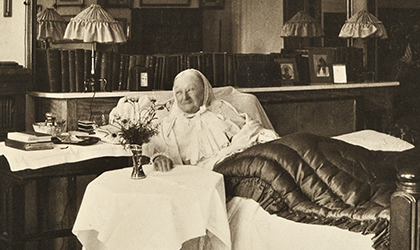
A few years ago, while sitting down for a midweek dinner with my family, I asked my children – both of primary school age – what they had been learning about at school. “I don’t remember,” said my son, which is his stock response to this day. “The Victorians,” said my daughter, whose passion for schooling seems to know no limits. Of the many Victorians there are to learn about, one name in particular came up: Florence Nightingale. What can you tell me about her, I asked. “She was a nurse,” came the reply. “And … she had a lamp!”
Not wishing to waste the opportunity to impart some knowledge of my own, I shared the fact that Nightingale was not only a nurse but a statistician too. Inevitably, I was then asked to explain what a statistician is, which I duly did, but the next question left me stumped. “What did she do as a statistician?” I didn’t have a good answer.
I said something about Nightingale being the first female fellow of the Royal Statistical Society – “you know, the place where Daddy works”. And, of course, I’d seen her polar area diagram of Crimean War deaths, having once edited a magazine supplement about data visualisation in which the chart was featured.
But it was at this point that I realised that I only knew Florence Nightingale in outline, a rough sketch of the person she was, much like many of us do, I’m sure.
Putting together this special issue of Significance, in celebration of Nightingale’s bicentenary, has therefore been something of a learning experience for me, and I hope it will be for you too as you set out to read it. We are fortunate to have great contributors to learn from.
Lynn McDonald, editor of Nightingale’s collected works, “sets the record straight”, as it were, with an article that explains what Nightingale did and did not do as a statistician. Digital Victorianist and print media scholar Alison Hedley then takes a close look at Nightingale’s famous polar area diagram, helping us to understand not only why the graphic is still striking now, but also why it was so striking at the time it was created.
Sticking with graphics, you will likely have seen our specially commissioned cover art already, but inside the magazine artist RJ Andrews presents it in expanded form, along with a short column in praise of Nightingale’s mission and vision. And Altea Lorenzo‐Arribas and Pilar Cacheiro display and discuss the map they have created of Nightingale’s social network.
This is just a taster of what’s on offer this issue. A brief outline, a sketch, if you will. As with Nightingale herself, there is much more to discover.
- Our April 2020 issue will be free to read online until the end of May 2020.




